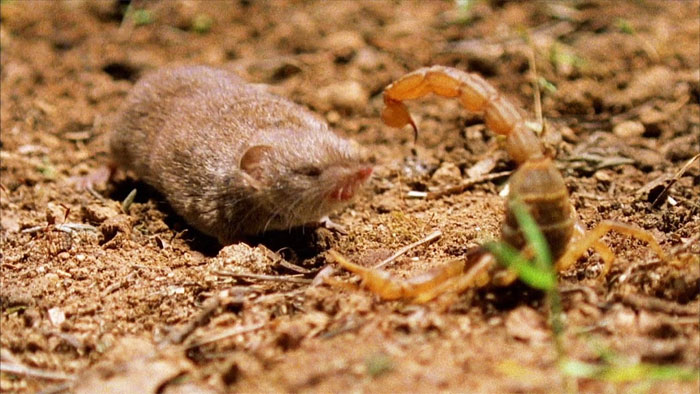Just one sting from a scorpion could spell doom for a shrew, but its incredible speed allows it to evade every attack.
Scorpions evoke images of formidable combat machines, possessing nearly perfect attack and defense mechanisms, with two pairs of pincers in front and a highly potent venomous stinger at the back.
However, when facing an adversary as fast and strong as the shrew, the scorpion seems to be rendered ineffective against all attacks.
In a rare video capturing a battle between an Indian red scorpion and a shrew, it is evident that although the scorpion fiercely resists the shrew’s attempts to attack, just a moment of distraction leads to the shrew biting its tail right below the venomous stinger, causing it to topple to the ground.
Once the scorpion is flipped over, it loses all its advantages and exposes its vulnerabilities. At this point, the shrew nonchalantly dives in to consume its foe, as a reward for its victory.
It is worth noting that the Indian red scorpion is considered one of the deadliest scorpion species in the world. Its venom targets the lungs and cardiovascular system, potentially causing fatal pulmonary edema in its victims.
Even for humans, the clinical mortality rate from an Indian red scorpion sting ranges from 8 to 40%. Therefore, for a small shrew, it is almost certain to perish if stung by the venomous barb, even if only briefly.

Battle between an Indian red scorpion and a shrew.
However, the shrew possesses a unique weapon: exceptional hearing and smell, despite having very poor eyesight.
Additionally, they are the only known terrestrial mammals capable of echolocation, comparable to bats. This ability allows shrews to easily locate prey as well as potential threats.
Moreover, the shrew’s exceptionally fast heartbeat enables it to achieve rapid reflexes. As seen in the video, the shrew successfully dodges all attacks from the scorpion’s pincers and tail without any difficulty.
However, the high heart rate also results in a significantly higher metabolic rate compared to the average for small mammals. For this reason, they need to eat almost continuously.
Their diet is quite diverse, consisting of seeds, insects, nuts, worms, and various other foods found in dense foliage and vegetation.


















































